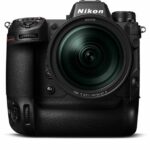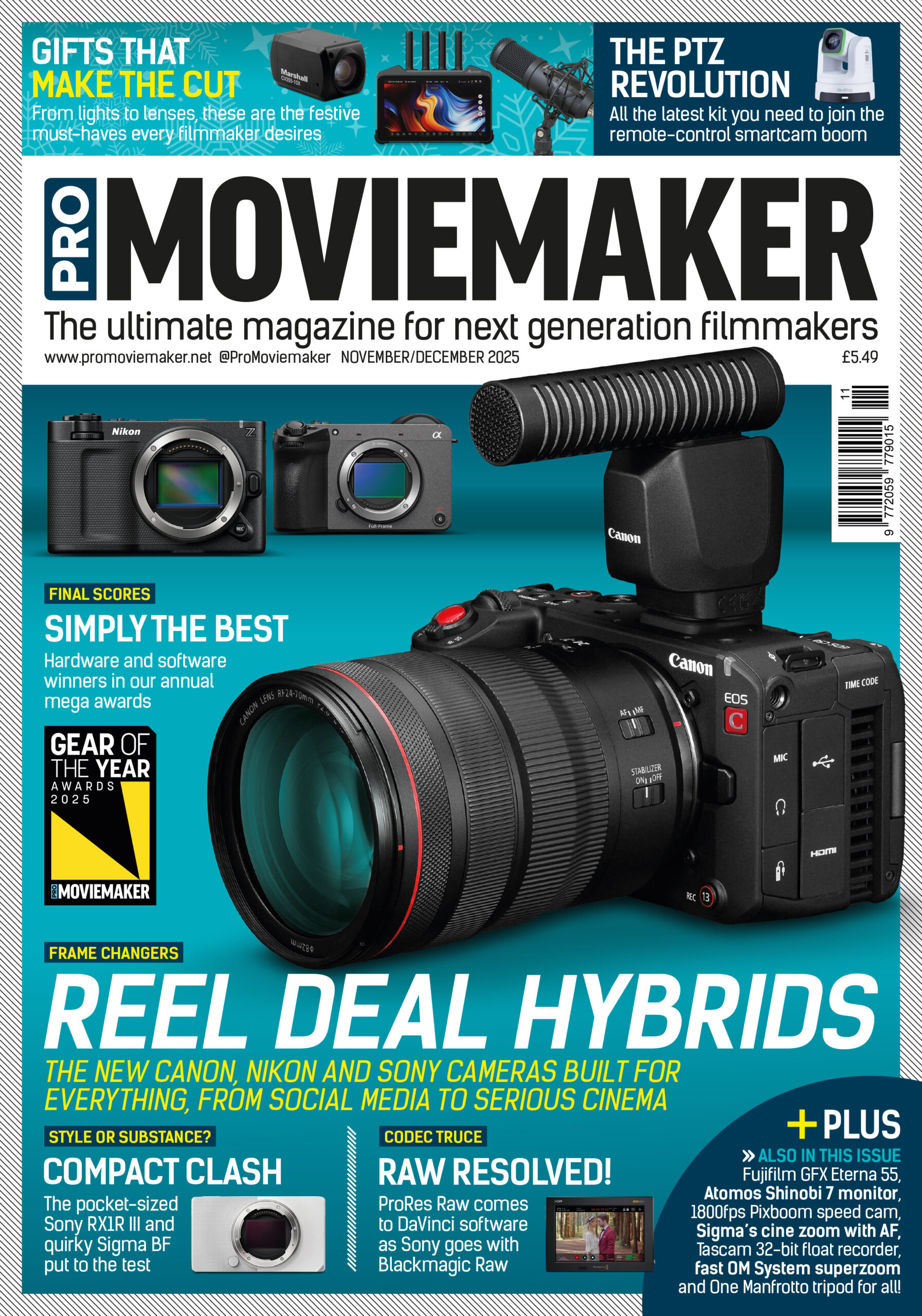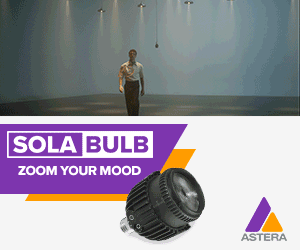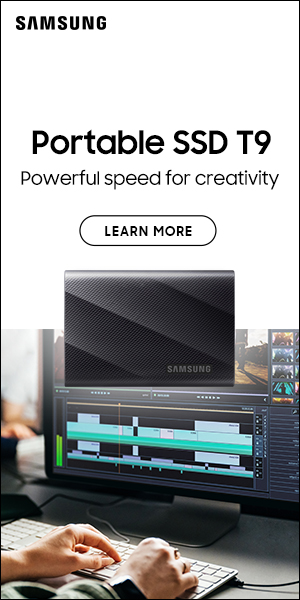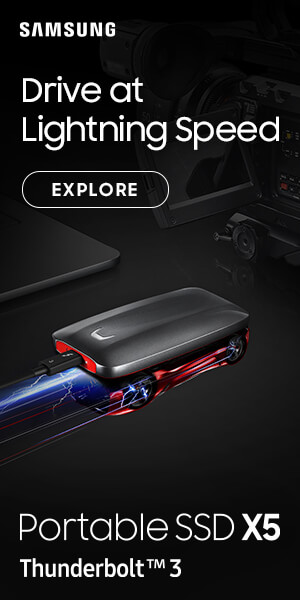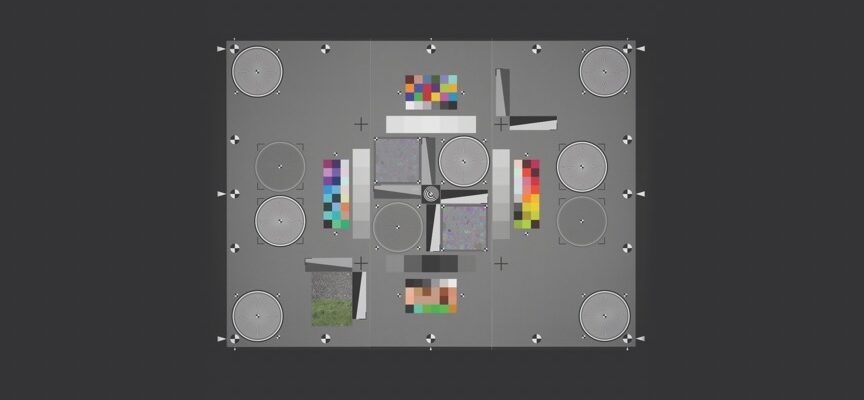
Group test: Next-level mirrorless
Posted on May 13, 2025 by Pro Moviemaker
The latest flagship full-frame cameras are tested by humans – and science – to see which is best
Words Adam Duckworth
Full-frame mirrorless wonder cams are being snapped up by professional filmmakers, stills-and-video hybrid shooters and content creators all around the globe. That’s because they are compact, affordable and pack high-bit-rate recording in a range of codecs, stunning autofocus and fast frame rates.
Some manufacturers now offer more video-based hybrid versions of their mirrorless cameras – such as Sony’s seemingly evergreen FX3 and Canon’s EOS R5 C. But these often have compromised stills performance to squeeze more movie technology inside. The FX3 doesn’t have a viewfinder, for example.
For a full-frame mirrorless camera to be a true all-rounder, with performance professionals can rely on for everything from shooting sports and weddings to studio work and documentaries, it must offer plenty of high-end features. These include blackout-free viewing thanks to a stacked sensor, fast stills and video frame rates, plus high resolution and low noise. This is the arena for the latest flagship cameras, like the Sony A1 II, A9 III, Canon EOS R1 and Nikon Z 9. So, we’ve put them all to the test – in more ways than one.
Usually, our tests are all hands-on, shooting what these cameras are designed for in the real world and closely inspecting the results. And, of course, that’s what we have done here.
But because we’re also the only video magazine that’s been granted membership of the prestigious TIPA, we also have full access to some of the most high-tech test facilities in the world. We had these four cameras put through their paces by the independent experts at TIPA’s Testlab, adding authoritative data and scientific
test results to the equation.
Armed with measurements and charts that cover a range of individual performance parameters for both stills and video – including resolution, high-contrast detail at different ISO settings, noise, colour reproduction and lots more – TIPA comes up with separate scores for video and photo image quality.
Here, we present the definitive test on the latest flagship mirrorless cameras for stills and video.
Pro Moviemaker overall verdict
One of the most interesting things about testing four of the best full-frame mirrorless cameras is not how similar they are in performance, but how their manufacturers have chosen to do things quite differently.
Sony is wedded to its smaller-is-best strategy, with none of its cameras – including the A1 II and A9 III – going for large body styles. Yet both Canon and Nikon have chosen to build big-boy bodies that offer ergonomic advantages. These have been honed for decades, and perhaps these brands expect audiences to demand a DSLR-type body.
For Sony, a relatively new player in the professional camera market, the compact form factor makes more sense, especially for video use, with the option of an additional battery grip for those who need it. The A1 II and A9 III have grown slightly in size compared to their predecessors, though.
Sony also goes a different way in making its A1 II the ultimate do-it-all camera. It’s fast enough for sports stills or video, and high-res enough for studio stills work and 8K video. If your work is a real mix, and you use Sony glass, this is the camera for you. But if you’re serious about sports, the A9 III offers a global shutter, although it comes with a lower resolution and isn’t as good in low light.
Meanwhile, Nikon’s Z 9 mixes the integrated grip style with the same ethos as the Sony A1 series – a true do-everything camera that also comes with internal Raw. Performance is similar to the Sony A1 II in many ways, just falling a tad behind in image quality and AF.
That leaves the Canon EOS R1, a camera that’s much better than its spec might suggest. Yes, it shoots Raw video internally and has incredible AF, but its low resolution means you’ll need another camera if you want to shoot super-high-res stills or video. Canon also has that in the EOS R5 Mark II.
Overall, it comes down to what you use your camera for and if you are already wedded to a system in terms of lenses and accessories. Apart from the global shutter of the A9 III, which makes sense for a small group of focused sports or hardcore flash users, it makes more sense to stick with the brand you are already invested in as they all have different solutions. It’s a great time to be in the market for a camera, and these four all offer something amazing.
This article was first published in the May/June 2025 issue of Pro Moviemaker

